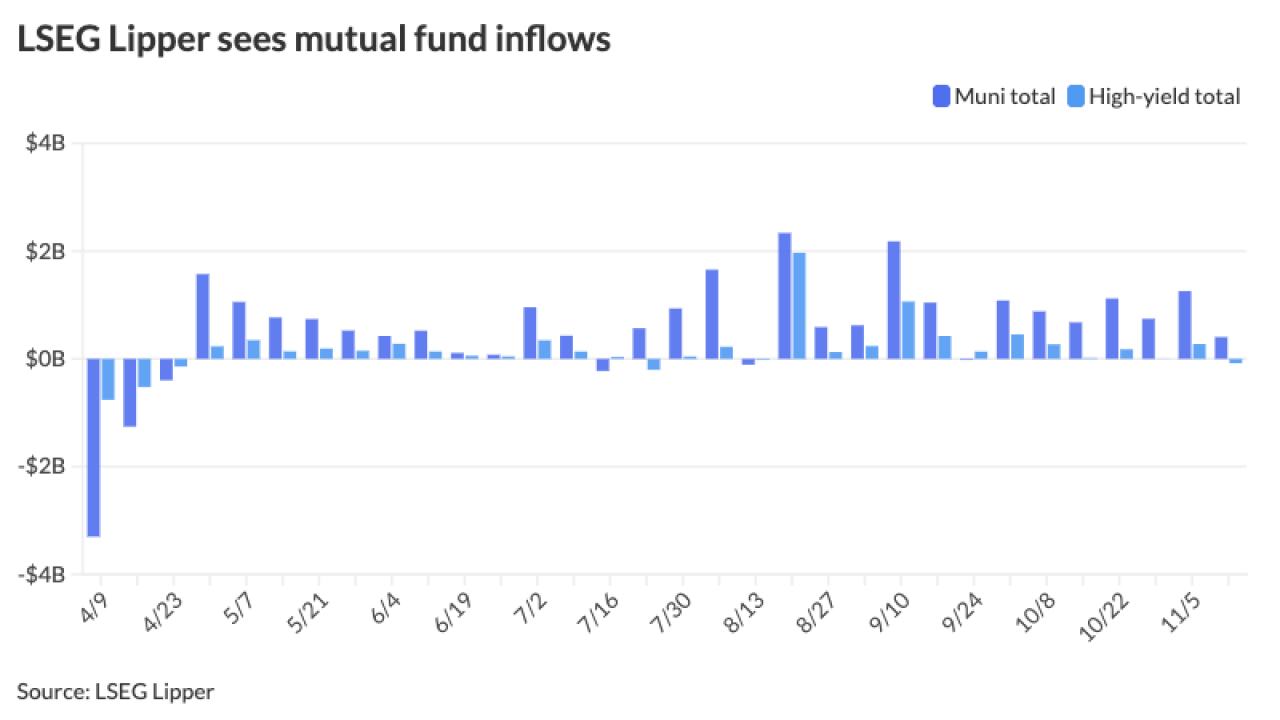Once again, Friday's economic data offered a mixed picture, with consumer sentiment down, spending up and incomes lower, while the Chicago Business Barometer was at its highest since May 2019.
The University of Michigan’s final consumer sentiment index for July slipped to 72.5 from the preliminary reading of 73.2 and June’s final reading of 78.1.
Economists polled by IFR Markets anticipated a 72.9 read.

The current conditions index fell to 82.8 from 84.2 earlier this month and compared with the preliminary reading of 84.2, while expectations dropped to 65.9 from 72.3 in June.
Personal spending
Personal spending rose 5.2% in June after gaining 8.4% a month earlier, the Commerce Department reported. Personal income fell 1.1% in the month after dropping 4.4% in May.
Economists predicted income would slip 0.5% and spending would jump 5.5%.
The personal consumption expenditures price index rose 0.4% in the month, after a 0.1% gain a month earlier, while the PCE core increased 0.2% each of the two months.
“The remarkable surge in durable goods consumption reflects households’ confidence in their finances — in large part due to the generous government income support programs, and the shift to working-from-home, while services consumption continues to be constrained by health concerns and restrictions,” said Roiana Reid, U.S. economist at Berenberg Capital Markets.
While overall consumption expenditures “fell at a 34% rate in the second quarter, real spending on consumer durable goods fell only 1.4%,” according to Morgan Stanley economists.
“With significant strength in a number of components in the later months of the quarter, durable goods spending is a lumpy category, and strong upside in late 2Q may be partially offset by some reversal in 3Q,” said Ellen Zentner, Robert Rosener and Sarah Wolfe, economists at Morgan Stanley in a note. “Moreover, with what appears to be at least some gap in the extension of supplemental unemployment benefits, consumer spending may soften in August, but then if additional stimulus is delivered in August, as we expect, spending should bounce back, at least partially, in September.”
Chicago PMI
The Chicago Business Barometer climbed to 51.9 in July, its highest level since May 2019, from 36.6 in June.
Economists estimated a 44.5 read.
“Business activity recovered following twelve consecutive months of readings below 50,' according to the release. "Nevertheless, companies noted continued uncertainty amid the ongoing COVID-19 crisis.”
New orders soared 23.8 points to its highest level since August 2019. "Production strengthened, rising 49.5%, putting the index back into expansion," according to the release.
Order backlogs rose 15.3 points in the month, its highest in about a year, but still shows contraction, as it has since September 2019.
Employment cost index
The Employment Cost Index climbed 0.5% in the second quarter after a 0.8% increase in the first quarter, the Labor Department reported Friday.
Wages and salaries rose 0.4% and benefit costs grew 0.8% in the quarter, after to increases of 0.9% and 0.4% in the first quarter.
Milwaukee PMI
The Milwaukee-area PMI index crept to 44.90 in July from 43.49 in June.





